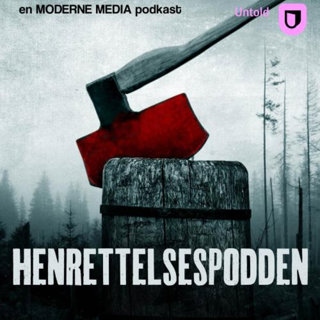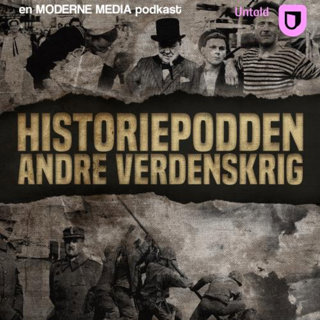
56. Taxing times
Lord Bute, as Prime Minister, did what he could to attack the British public debt by reducing costs. But there were limits to how far he could go. Eventually, he needed to raise taxes too. With his Chancellor of the Exchequer, Pitt’s former friend and now political enemy George Grenville, he pushed through a tax on cider. Then, after Bute fell and was replaced by the same Grenville, it was time to try taxing the American colonists. There were widespread objections to the Sugar Tax, but eventually it was grudgingly accepted and generally paid. Sadly, Grenville couldn’t simply accept that small win. He overreached with another tax he thought was an exceptionally smart move: the Stamp Act. And with that he effectively drove the first nail into the coffin of Britain’s imperial position in North America. Illustration: George Grenville, the ‘Gentle Shepherd’, published by Richard Houston, after William Hoare, circa 1750-1775 National Portrait Gallery D20047 Music: Bach Partita #2c by J Bu licensed under an Attribution-NonCommercial-No Derivatives (aka Music Sharing) 3.0 International License
10 Sep 202114min

55. You’re not all at sea if you know where you are
It may not come as a surprise to discover that many authorities believe that, if you’re doing a long journey at sea, it can be helpful to know where you are. Working out your latitude was relatively simple and had been known for a long time before the eighteenth century. Longitude was another matter. The British government even put up a prize for the first to come up with a really viable solution. Enter John Harrison, a remarkable craftsman. He started as a joiner, so a skilled woodworker. When he started building clocks, he used wood for the work. But he realised that, to build a chronometer, a device that could tell sailors at sea the time in a specified distant location, e.g. London, he would have to work in metals. So he taught himself to do so. He impressed the Board of Longitude in 1737 with his first prototype, but he wasn’t happy with it himself. So he spent another 27 years building three more, with financial support from the Board. In 1764, his fourth prototype, the size of a large watch, passed the test required for the prize. A lot of this work had been funded by the grants from the Longitude Board, a public body. That’s a model for research that persists to this day. As do the techniques that followed the success of his chronometer: mass production of the devices, exploring techniques that would be the hallmark of the industrial revolution. The Longitude story is about helping sailors navigate at sea. But it’s also about ways of dealing with Research and Development, and with Manufacturing processes, that went far further still. It shows how much can be achieved by the clever use of government funds well invested. Illustration: John Harrison by Thomas King, with his successful fourth prototype chronometer. Science Museum Group Collection, released under Creative Commons Music: Bach Partita #2c by J Bu licensed under an Attribution-NonCommercial-No Derivatives (aka Music Sharing) 3.0 International License
3 Sep 202114min

54. The cost-cutters take charge
You may like or loathe the British Empire. But if the aim was to build it, few people did it with such skill or such success as William Pitt the Elder when, at last, he found himself the driving force in government. However, to achieve his goal, he spent huge amounts of money, for which he drove up the national debt to levels many thought unacceptable, because unsustainable. And one of those people was the king. This is a recurring occurrence in English history. From time to time the cost-cutters take charge. When it comes to bold or dramatic initiatives, that means killing them. The architects of such initiatives are, of course, simply discarded. So failure was the reward for all Pitt’s success, when he was driven from office. Illustration: William Pitt after the failure with which his peers and his king had rewarded all his success. After Richard Brompton, based on a work of 1772 National Portrait Gallery 259 Music: Bach Partita #2c by J Bu licensed under an Attribution-NonCommercial-No Derivatives (aka Music Sharing) 3.0 International License
27 Aug 202114min

53. Two young men unleashed: Robert
The second of our Two Young Men Unleashed, after James Wolfe, is Robert Clive. He too was of minor gentry background, but the resemblance ends there. His childhood was marked by some violence, courage, and even criminality: he ran a protection racket for a time. These qualities served him well as he emerged as an unexpectedly gifted soldier in the service, not of Britain, but of the British East India Company, using military force as well as bribery to advance its interests, and his own, in the subcontinent. In this way, he helped turn India into a source of colossal wealth for the shareholders of the company, while also making a massive fortune for himself, even though it reduced the people from whom that wealth was being sucked, to dire poverty and even famine. His lack of scruples fits with an adolescence marked by violence and criminality. Or, to put it differently, that past fits well with the nature of the imperial power he helped launch. Driven by profit, it treated all other concerns as secondary. And the Indians paid the price. Illustration: Benjamin West, Shah 'Alam, Mughal Emperor, Conveying the Grant of the Diwani (the right to collect taxes in Bengal) to Lord Clive, August 1765. In reality, the transaction happened in Clive’s tent, with the throne being a chair placed on top of a table covered by a cloth. From Wikimedia Commons. Public Domain, including in the US. Music: Bach Partita #2c by J Bu licensed under an Attribution-NonCommercial-No Derivatives (aka Music Sharing) 3.0 International License
20 Aug 202114min

52. Two Young Men Unleashed: James
The original jewel in the British imperial crown wasn't India but North America. And William Pitt the Elder, Prime Minister in all but name since our last episode, was going to make sure the armed forces there were up to the task of breaking the stranglehold of the French. That meant spending what was needed, but also making sure that forces were well-led. Pitt was ready to do whatever it took to make that happen, even if it meant breaking with centuries of tradition, and promoting men on merit not aristocratic background. That made it possible for the first young man unleashed, of the two in this and the next episode, James, or General Wolfe as he came to be known, to win a comprehensive and decisive victory over the French in Canada. Plus, in this episode: the extraordinary victory of British and Hanoverian infantry over French cavalry at the Battle of Mindon, was as spectacular as it was unprecedented. Illustration: The Death od General Wolfe, by Benjamin West - The Yorck Project (2002) 10.000 Meisterwerke der Malerei (DVD-ROM), distributed by DIRECTMEDIA Publishing GmbH. ISBN: 3936122202., Public Domain, https://commons.wikimedia.org/w/index.php?curid=160192 Music: Bach Partita #2c by J Bu licensed under an Attribution-NonCommercial-No Derivatives (aka Music Sharing) 3.0 International License
13 Aug 202114min

51. The next round
An Admiral’s career reaches a sticky end as he’s shot to encourage the others to do better. A remarkable politician, denied advancement repeatedly, finally breaks through to power. Another war spreads across the world but, with fine leadership, this time Britain will spend the money necessary to make sure it’s truly decisive. It’s the beginning of the Seven Years’ War and the time of William Pitt the Elder. Illustration: William Pitt the Elder in 1754, from the studio of William Hoare National Portrait Gallery 1050 Music: Bach Partita #2c by J Bu licensed under an Attribution-NonCommercial-No Derivatives (aka Music Sharing) 3.0 International License
6 Aug 202114min

50. Preparing for next time
In the uneasy peace between the War of Austrian Succession and the Seven Years' War, Britain set about securing its growing imperial power. Central to it was its position in North America, as many visionaries saw, not least the then committed supporter of the Empire, Benjamin Franklin, in Pennsylvania. But that meant dealing with the French stranglehold around the British Colonies in what is now the United States. Three attempts, first manned and led by Americans (George Washington's first and defeated command), and then directed by Brits (to no better success), all failed spectacularly, demonstrating nothing so much as the incompetence of the British military whether colonial or from the mother country. On the other hand, British force did well in another appalling and shameful act of ethnic cleansing, very much in the spirit of the Duke of Cumberland's actions towards the Scottish Highlanders, up in Nova Scotia, present-day Canada. Illustration: At one time a visionary for the British Empire: Benjamin Franklin by Benjamin Wilson, in 1759. Public Domain via Wikimedia Commons Music: Bach Partita #2c by J Bu licensed under an Attribution-NonCommercial-No Derivatives (aka Music Sharing) 3.0 International License
30 Jul 202112min

49. Oh no! Not more Stuarts...
While the British army was on the European continent, putting up a pretty useless fight against the French in the Austrian Netherlands, Charles Edward Stuart launched a new uprising - or possibly rebellion, depending on your point of view - back in Britain. Known as Bonnie Prince Charlie to some, his uprising - the final attempt to put the Stuarts with their absolutist views of monarchy back on the throne - was far from bonnie in its consequences for the people of Scotland. Partly because he turned out to be a less attractive character than one might believe, but even more because of the programme of ethnic cleansing run in the Highlands by the Duke of Cumberland, who came to be known as 'Butcher Cumberland', the king's younger son and a hopeless general against armies, but highly effective against disorganised insurgents and civilians. Nothing bonnie about this ugly episode in the history of the British nations. Illustration: Not so bonnie in later life. Prince Charles Edward Stuart by Hugh Douglas Hamilton, circa 1785 National Portrait Gallery 376 Music: Bach Partita #2c by J Bu licensed under an Attribution-NonCommercial-No Derivatives (aka Music Sharing) 3.0 International License
23 Jul 202113min




















